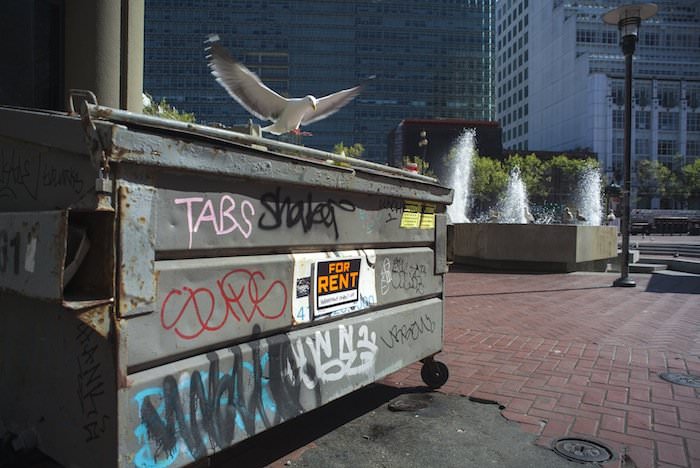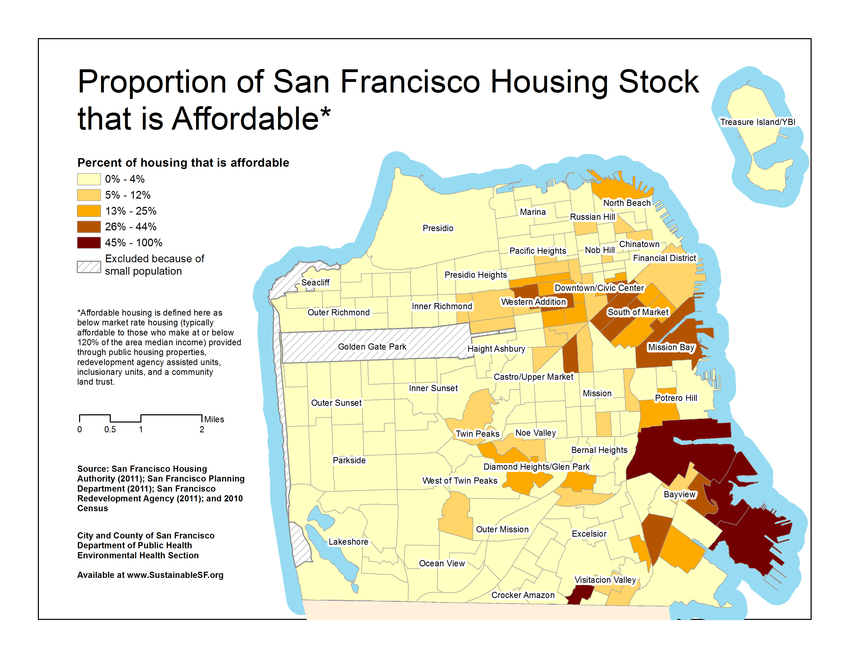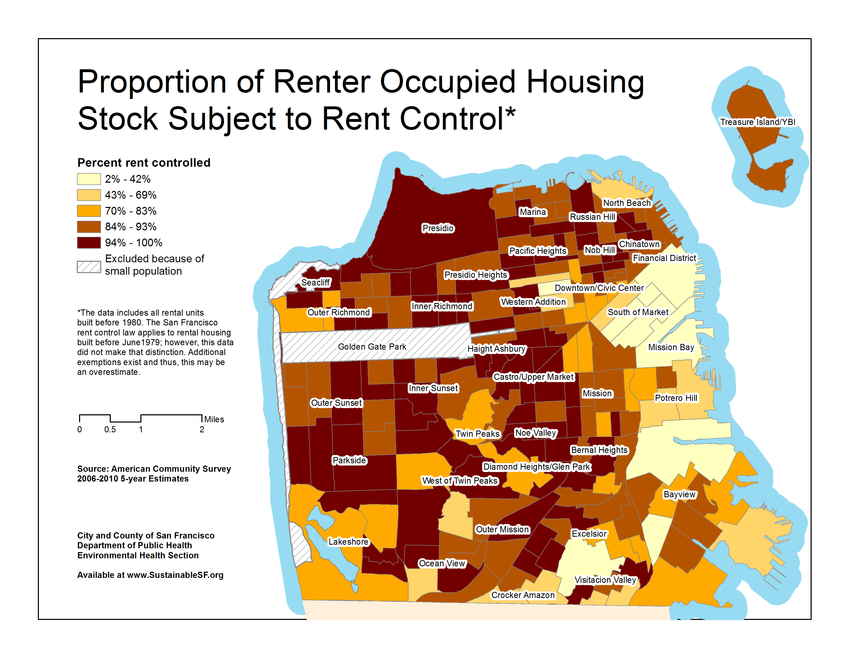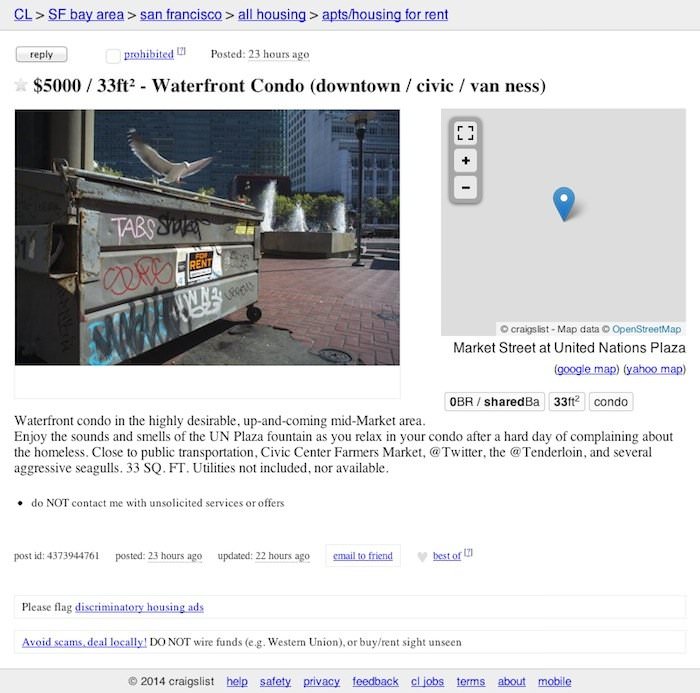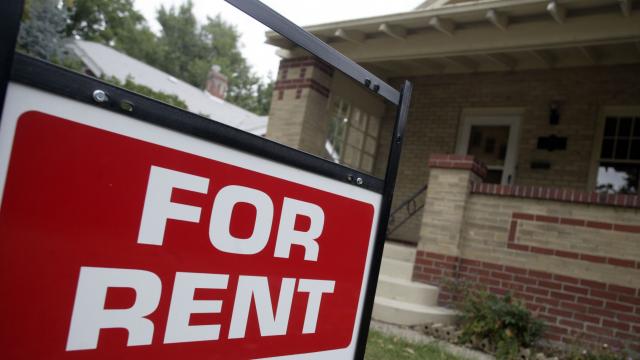
RICHMOND, Calif. — It’s a miserable time to be a renter in California. Each year, double-digit spikes in rents in cities around the state force many to relocate. Government regulations generally favor landlords over tenants, and it has been three decades since a strong housing rights movement pioneered renter protection laws born of the economic whiplash of the 1970s, when inflation had severe effects on housing costs. The death knell for renters’ rights sounded in 1995, when the real estate industry successfully pushed to prohibit rent control in buildings constructed after that year.
Rent control, also known as stabilization, caps the yearly increases in rents that landlords may charge their long-term tenants. In many Northern California cities and in Los Angeles, where massive displacement has triggered a decline in ethnic and income diversity, rent control is one of a few policies being dusted off and reconsidered as a solution to today’s crisis. A rent-control ordinance that was set to go into effect on Sept. 4 in Richmond would have been the first rent-control regulation in the state in more than 30 years.
However, one day before the City Council’s ordinance was set to take effect, a real estate industry group submitted enough signatures to suspend it. As in the 1970s, these policies face deep-pocketed opponents: landlords and the real estate industry.
“Rent control is a hot topic in several municipalities in the Bay Area, and it’s been brewing for months in Richmond,” warned the California Apartment Association (CAA), a Sacramento-based real estate industry organization, on its website and social media. “If it’s approved here, the rent control movement gains dangerous momentum.”
Is Rent Control Contagious?
A half-hour drive north of San Francisco, Richmond is ground zero in this battle for tenant protections. Until recently, Richmond’s major claim to infamy was its Chevron oil refinery, which has been dogged for years by environmental and health troubles. In 2012 a fire at the refinery drove 15,000 locals to seek medical attention at area hospitals. In August 2015, Chevron paid millions of dollars in fines related to 22 air quality citations that the refinery racked up over the course of a year.
A decade back, a progressives took over Richmond’s government. The city, with a population of 100,000, became the nation’s largest to elect a Green Party mayor, and there was a widely publicized battle with big banks over whether the city may seize underwater mortgages via eminent domain.
The rent control ordinance, adopted in August of this year, also required landlords to have just cause to evict tenants, such as rent nonpayment.
According to The Contra Costa Times, the CAA paid people up to $20 per signature in a bid to gather the 4,100 signatures required to block the new regulations. Complicating the situation, a number of residents say they were duped into signing the petition, which they were led to believe was in support of rent control.
Lifelong Richmond resident Stacey Agnitsch explained how she narrowly avoided signing the petition after she questioned the person asking for her signature about the particulars of the document. (Calls to the CAA were not returned.)
In a video posted on YouTube, she said, “I asked her, ‘Did the people listed on the petition who’d signed their name realize that they were signing a petition to repeal rather than in support of?’” Several other residents contacted the Richmond Progressive Alliance, a backer of the tenant protection ordinance, with stories like Agnitsch’s.
By Oct. 15, the Contra Costa County Elections Office verified that the petition included enough valid signatures to block the legislation. The issue will head to a popular vote next year.
Twenty dollars per signature may seem like a lot, but real estate industrialists are spending even more campaigning against the spread of tenant protections in larger, more politically moderate California cities, like San Jose.
Debating "Affordable"
The Bay Area’s largest city, with just over a million people, San Jose is home to Jacklyn Joanino, a staffer working for City Council member Donald Rocha. It is considering whether increasing protections for renters could benefit low-wage workers who have trouble affording necessities like food and gas. According to data compiled by the National Low Income Housing Coalition, a person needs to make $35 per hour to afford a market-rate two-bedroom apartment in the San Jose area. (California’s minimum wage is $9 per hour.)
She rattled off some of the kinds of San Joseans who are having trouble getting by in a city host to the headquarters of some of the world’s wealthiest companies, including eBay, Cisco Systems and IBM. “Seniors, cooks, bank tellers, retail workers, teachers, medical assistants, public health and social workers,” she said, adding, with a bit of laughter, “certain policy aides.” (Positions like hers tend to top out at about $45,000 per year.)
Silicon Valley’s tech boom has brought plenty of wealth to San Jose, but that money isn’t trickling down to many of the area’s long-term residents.
Joanino gave an example of how San Jose’s rent cap works right now: Landlords may increase rent by 7 percent after one year or by 21 percent if they have not upped the rent in two years. But because of the Costa-Hawkins Act, a law crafted by the real estate industry, these caps apply only to housing built before 1979. In San Jose, that’s about 43,000 units, or 15 percent of housing.
For a tenant paying a typical $1,950 per month for a one-bedroom apartment in San Jose, a 7 percent increase would be $136.50 per month. “That may be reasonable. People can still adjust,” she reasoned. But a 21 percent increase, or $409.50 per month, could be the difference between staying in and leaving the Bay Area.
In early September, landlords inundated San Jose’s City Council with form emails and letters distributed by the 13,000-member CAA and similar groups. The letters argued for government incentives for the propertied class as a solution to the housing crisis, in many cases expressing political disagreements with the concept of rent control. Landlord Keith Adams, for example, wrote that it was “not equitable to put price controls on a market-driven” economy.
San Francisco, which has hogged the media coverage of California’s housing issues, has what is possibly the country’s strongest rent-control policy. And the “highest volume of affordable housing in the city is the rent-controlled housing stock,” according to San Francisco Tenants Union organizer Andrew Szeto, who added that politicians’ first priority should be to strengthen rent control.
Loopholes in the current legislation, like one that allows a landlord to evict a tenant in order to temporarily move into a property, then flip it to a higher-paying tenant, have led to affordable housing being lost about as fast as new affordable units are built. (The definition of “affordable” itself is in question, with ostensibly affordable units still too expensive for people who make less than $4,000 per month.)
November will see two ballot measures in San Francisco: one on a moratorium on luxury condo construction in the quickly gentrifying Mission District and one on regulating Airbnb and other short-term home rental websites that landlords have used to take long-term rentals off the market, instead marketing them to tourists like hotel rooms.
Born and raised in San Francisco, Szeto became interested in housing issues during the city’s housing crisis during the dotcom bubble of the late 1990s and later spent time studying matters like gentrification in Detroit. He has been involved in activism in the city on issues such as the Google buses, the tech industry’s responsibility for housing unaffordability and police evictions of tenants whose landlords want to cash in on the massive upswing in market-rate rents.
Diversity Dwindling
According to him, “The first, most shocking thing I notice is almost everyone is white. That is something that’s totally changed from when I was growing up here.” The city’s black population shrank by more than a third from 1990 to 2010 while the city’s overall population grew, according to U.S. census data.
Davin Cárdenas is a fair-housing advocate with the North Bay Organizing Project in Sonoma County. He said Northern California is increasingly becoming “a playground for the rich” where working- and middle-class people struggle to make ends meet.
In Sonoma’s storied wine country, renters in Santa Rosa have faced 37 percent rent increases over the past four years, according to the real estate research firm Real Answers. That, combined with a 1 percent vacancy rate, leave displaced tenants virtually no options but to leave the city. Current laws allow landlords in Sonoma County to evict tenants for any reason.
Cárdenas had venom in his voice as he described a recent mass eviction in the otherwise quaint hamlet of Healdsburg. The town draws amateur photographers and tourists attracted by its Victorian-style architecture and Rockwellian town square, but in July 2015 the town of 11,000 was struck by controversy when the Drake Property Group evicted all 21 of the mostly Latino families living in an apartment complex that the company recently purchased.
After the eviction, Drake’s marketing materials promoted itself as seeking “a tenant demographic more appropriate to the refined nature of the Healdsburg community, tenants who value good design and beautiful surroundings.” The working-class Latinos who made up most of its previous tenants and their allies, like Cárdenas, called it “blatant racism,” but without tenant protections, there was little they could do.
He said the situation pits slum dwellers against slumlords, with tenants who fear eviction not speaking up about poor conditions. In August, Healdsburg introduced nonbinding guidelines limiting rent increases to 10 percent per year. But the guidelines are just that, and they aren’t enforceable.
A bigger question looms, according to Cárdenas. “What is the role of government in a time of crisis? Does it protect those who currently live here or who have been living here their whole lives?” he asked. As it stands, the real estate interests are “throwing money at council members” in the form of campaign contributions, and “you have to pay to play,” he said. Construction and real estate firms are among the biggest donors to public officials in the state, and state election filings show the recipients include the mayors of Healdsburg and Santa Rosa, Shaun McCaffery and John Sawyer.
Still, the recent surge in tenant organizing in cities like Richmond gives Cárdenas hope. He said, “Amongst working people, amongst middle-class people and amongst renters, there’s wholehearted support” for more renter protections, “and there’s also support from homeowners and allies who care” about the dropping diversity and increasing wealth inequality. Corporate welfare
Few deny that the affordability crisis is a result of government aid for tech titans that have come to dominate Bay Area politics. Such programs are to blame for an influx of highly paid tech workers, many of whom make well over $100,000 by their mid-20s.
Despite tech’s libertarian reputation, “free-market capitalism doesn’t exist,” in San Francisco, according to Szeto. “What we have now is welfare for corporations,” he said, referring San Francisco’s so-called tech mayor, Ed Lee, who pushed for tax breaks for tech giants, such as the $55 million rebate dubbed the Twitter tax break, which he argued was essential to keep innovative corporations in the city.
If the tech bubble bursts, as many economists are predicting, the result could be a boon for renters. (In San Francisco, costs went down by about 10 percent in 2001, after the first dotcom bubble went bust.) High-profile economists like Dean Baker, one of the few who predicted the housing crash of 2008, have suggested that people who live in California but work outside the insular tech industry shouldn’t be too worried, since bubbles tend to affect only workers who are directly involved.
For the time being, Cárdenas said, workers “who actually create and maintain the economy” — everyday laborers making low wages — will continue to be displaced from places like Sonoma, driving hours each day in order to work for the most affluent members of society.
3 WAYS TO SHOW YOUR SUPPORT
- Log in to post comments


